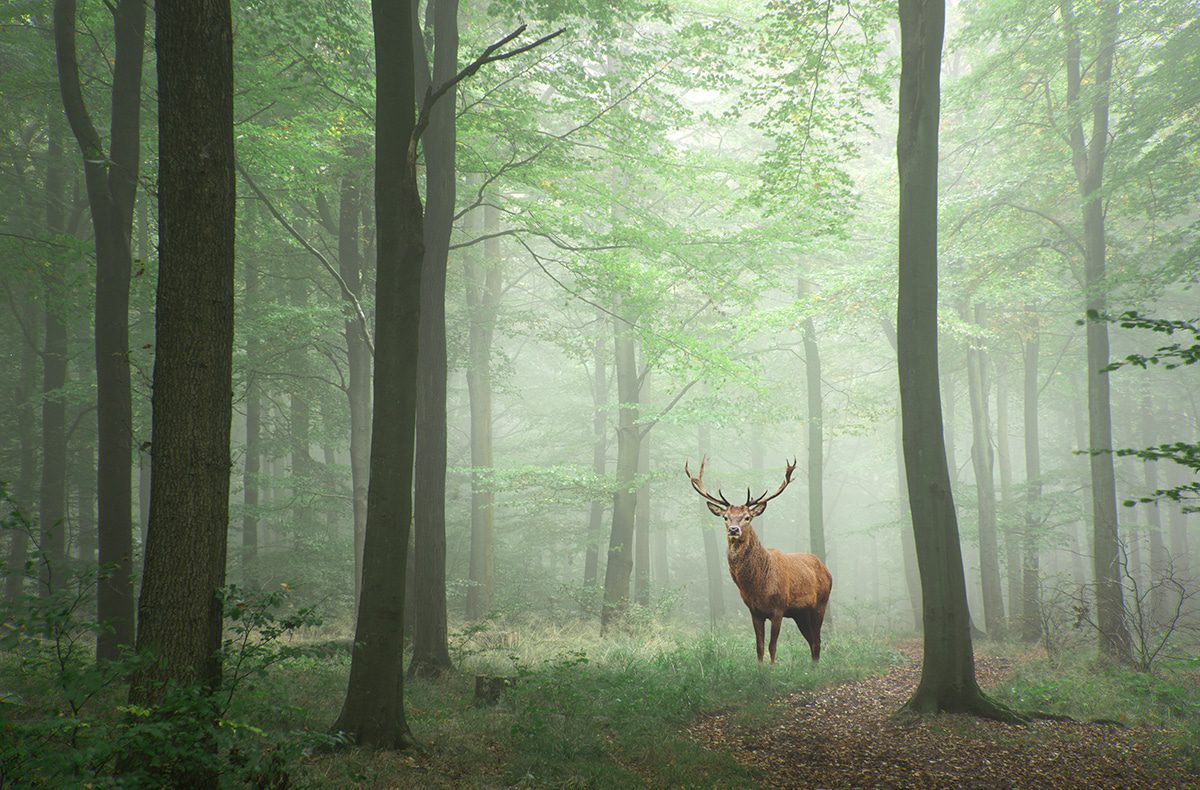
Jemima Atar’s article explaining nature’s positive impact on mental health resonated with me on a number of levels. As a city dweller, I especially appreciated how she recommended seeking out the bits of green space we can find within our concrete jungles, and how practicing mindfulness within nature can benefit our mental health enormously.
Lately, I’ve found it’s increasingly important to find the time to get outside—especially since quarantine, where we all found ways to run on our hamster wheels—both work and exercise-wise—indoors. As Jemima noted, research supports that “just five minutes of ‘green exercise’ (exercising in outdoor nature) improves self-esteem and mood, and the effects are even greater for green spaces containing water.” While exercise alone is a serotonin booster, it’s great to pair your physical activity with some green-space recharging if possible.
I’ve recently taken up the habit of taking long, 10,000-step daily walks, which I prefer to do in Riverside Park along the Hudson. Although an imperfect “nature walk”—the Great Outdoors tends to have fewer shattered Corona beer bottles underfoot and a bit less music blaring from portable speakers—I still get to tap into some of those eco-calming vibes. Walking under the trees and gazing out on the Hudson is incredibly soothing, even when underscored by unsolicited Reggaeton.
I also appreciated how Jemima recommends you “capture” images from nature “in your mind’s eye and make it your safe space,” noting that “[c]onnecting with nature is all about calming the hyper-sensiti[z]ed nervous system, reducing anxiety, and clearing the mind.” Often meditating and taking in nature get put into an unscientific “wellness” camp, but research has shown that we should embrace this side of ourselves more often to live fuller, happier lives. Hopefully her article—and perhaps this follow-up—will convince a few Type-A folks to follow this advice, which actually does have empirical evidence supporting its benefits. (Type As love empirical evidence!)
I can back this up somewhat anecdotally from my previous life amongst the Type A-iest of the Type A—long distance triathletes. As a sport, triathlon is absurdly data driven. It’s all about eating the right type and amount of food at the right time, monitoring your pace and heart rate zones, etc. And naturally it’s super results-motivated, as you’re always trying to PR and/or get a spot for Kona (which only the top few of each age group qualifies to do.) As you can imagine, a whole lot of mental and physical stress is involved in the sport: figuring out ways to manage that is essential to any modicum of success—or survival.
I read a ton of books on multisport during this time, but the one that really had the biggest impact on me was Fit Soul, Fit Body, a training guide co-written by Brant Secunda, a Huichol shaman and healer, and Mark Allen, a six-time Ironman champion. (Talk about an odd couple!) While it includes plenty of expected athletic advice on nutrition and strength training exercises, there are equal parts shamanistic guidance on clearing the mind by connecting to nature— like Jemima, they too advise to swap out some of your indoor workouts for ones outside.
One particular stress-reducing exercise that never left me was “invoking the image of the deer.” Here, it is recommended to channel the deer’s image, calling to that deer spirit for help in holding onto “balance and harmony.” (If you think this sounds awkward and cringey, Secunda does note that “even the Huichols are sometimes self-conscious, and may prefer to do things silently.”)
While coming from a psychotherapy-informed perspective, Jemima’s advice on recollecting a mental image of nature to calm ourselves is remarkably close to Secunda’s shamanistic exercise. He concludes: “Allow the stress to leave and to have beauty, power, and joy come into your heart. Imagine a beautiful image of nature coming and nurturing your body. Feel the power of this transformation and ultimately the joy that materializes as a result of your sincere efforts.”
And it really does work. Back in my Los Angeles triathlon days, I saw a deer during a run in Griffith Park and held that image in my mind—while also preserving it on Instagram:

That became my precious go-to deer image for stress relief. A few months later during Ironman Arizona, I was in an incredibly stressful moment at the race’s start. Mounds of Type A (asshole) wetsuited men essentially punched me in the head repeatedly as we all crawled over each other in the mass swim start, with the sun shining right in our eyes. With each gulp of air and stroke forward, blinded by the sun, I just kept thinking, “image of the deer, image of the deer.” This little cutie came into my mind’s eye, helped me calm down, and eventually the field cleared and I got through it. (And didn’t drown.)
Briefly: I must note that there’s something undeniably icky in the idea of Native shamanic wisdom being co-opted by rich white Western people to improve their performance in thousand-dollar races on multi-thousand dollar carbon-frame bikes. In spite of this, I think it’s vital to spread respect and reverence for nature however possible, as much as possible, among us all. Additionally, as Jemima noted in her article, appreciating the value of nature as something we all need and therefore must fight to preserve now—not just for the future, but for our present selves—is an incredibly vital message everyone should take to heart.
These days, my path is more likely to cross with a pizza rat than a majestic deer, but I still hold onto beautiful images of nature in my mind. At the very least, I can always find a quick moment to slip down to Riverside to watch the setting sun as it glitters across the river, through the trees. It’s plenty calming, even if the soundtrack isn’t quite as natural—unless you count Bad Bunny as wildlife.



